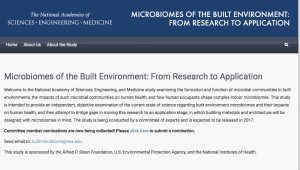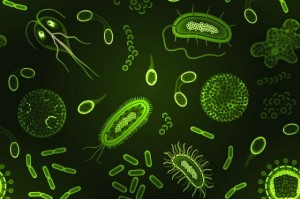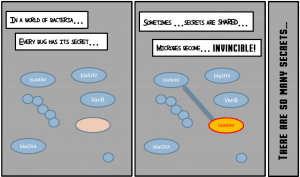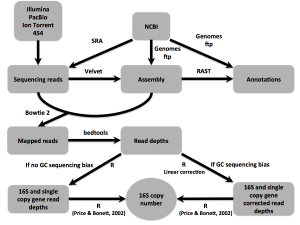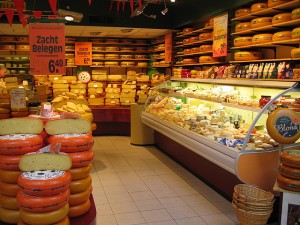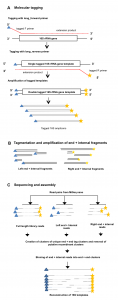Just got sent this by Katherine Bowman from the Board on Life Sciences. This is really important and if you know of someone who would be good please consider nominating them. Request for Committee Nominations — Microbiomes of the Built Environment: From Research to Application The National Academies of Sciences, Engineering, and Medicine are …
(This is a guest post by Jordan Peccia at Yale University) After a six-month period of home recruitment, surface and aerosol sampling campaigns have begun in an Alfred P. Sloan Foundation indoor microbiome sponsored project awarded to Tulsa and Yale Universities. The goal of this proposed research is to explore how two central and modifiable …
So – I thought some people here would be interested in this. As someone who has been involved in the Alfred P. Sloan Foundation’s program in “Microbiology of the Built Environment” for many years, I have been trying to get more involved with the built environment crowd. And I have not always been exceptionally successful …
Sanitation remains a problem in many developing countries across the globe. However, this issue goes much deeper than just delivering clean water to billions of people and treating sewage waste. The Conversation ran an article earlier this month on this topic. They bring up two important aspects of implementing water treatment programs in struggling countries. One …
Some antibiotics routinely used in the clinic are considered to have little side effects. Such is the case for cefprozil, a second generation cephalosporin. This relative safety may be true (to a certain degree) from the viewpoint of humans taking the antibiotic. However, it is not the case from our commensal microbes’ perspective. Our study, …
In scientific manuscripts, we tell stories of our research, generally in straight-line fashion with clear motivations and results. This type of research is rare (in my experience), with stories, motivations, and applications only realized post hoc. This is the nature of science, and our recent ISMEJ publication is no different. With “16Stimator: statistical estimation of …
Amanda Clack, RICS President Elect tells Womanthology why diversity is a strategy and a source of competitive advantage, not an issue Just got done reading this: Surveying the future for women in the built environment and land: Diversity is a strategy and a source of competitive advantage, not an issue – Amanda Clack, RICS President Elect …
OK, so they are not actually gigantic bacteria. But this is just really a great idea: The Colosseum becomes a living artwork — powered by its own bacteria | Art and design | The Guardian Now the arena — or rather, the bacteria within it — is becoming a living artwork for the first time, over …
Cheese has often been studied as a microbe-rich environment. The variety of interactions in one of the tastiest foods on earth (personal opinion) is still only just being discovered. A recent paper from Stellato et al attempts to study these interactions by swabbing and sequencing the food itself and the various surfaces it comes into contact with during the …
Microbial ecology has benefited enormously from the development of high throughput sequencing technologies, driving the discovery of massive diversity in environments from the ocean to the human body. Where sequencing of less than one hundred 16S rRNA genes from several samples used to be common place with cloning and Sanger sequencing, we can now generate tens …
